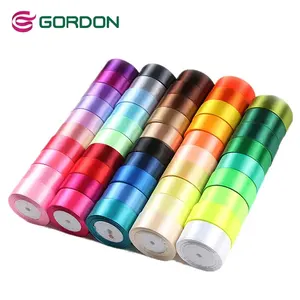
All categories
Featured selections
Trade Assurance
Buyer Central
Help Center
Get the app
Become a supplier

(950 products available)
















































winners ribbons are awards given to individuals or teams who achieve success in competitions or events. These are some types of ribbons:
Achievement Ribbons
These ribbons are awarded for accomplishing a specific goal or reaching a milestone. They signify personal growth and development and are often used in educational and training contexts. They are usually given in different colors, such as blue, red, and white. They often have a logo or emblem representing the organization or event that issues them. They can also have text indicating the achievement, such as "Completed," "Excellent," or "Leadership."
Competition Ribbons
These ribbons are commonly used in sports, arts, and various contests. They mark places of honor, such as first, second, and third. They are usually colored as follows:
They are also used in academic competitions, where different colors may signify various levels of recognition.
Participation Ribbons
These are given to all competitors, regardless of their performance. They acknowledge involvement and effort. They are commonly used in events where the goal is to encourage participation over winning. They symbolize the value of taking part in an activity. They can also be used in education to motivate students and others to engage in new activities. They are a way of recognizing everyone's contribution and can be a morale booster.
Special Recognition Ribbons
These are awarded for various accomplishments, such as leadership, sportsmanship, or dedication. They are often used to highlight exceptional qualities or contributions that go beyond standard competition results. Special recognition ribbons can have unique designs, colors, and symbols representing the specific honor or attribute being acknowledged. They are a way of celebrating individuals who have made a significant impact.
Custom or Personalized Ribbons
These are made to order for specific events, organizations, or purposes. They can be designed with particular colors, logos, and messages to suit the needs of the recipient or event. These ribbons allow for greater flexibility and creativity in design. They ensure that the award is meaningful and relevant. They are often used for corporate events, community gatherings, and private celebrations.
These are some of the design elements of winner's ribbons.
These are some ideas for wearing and matching winner ribbons for various events and ceremonies.
Wearing Suggestions:
Wear winner ribbons by pinning them to clothing, draping them around the neck, or affixing them to bags. Choose a prominent spot for visibility and easy access. The wearer should honor the achievement and make a personal connection with the ribbon. Incorporate the winner ribbons into everyday wear. They should be kept in a place where they can be seen regularly. Use them as a source of motivation and inspiration for future goals.
Matching Suggestions:
Matching with winner ribbons depends on color and style. Blue ribbons usually symbolize first place or outstanding achievement. They should be paired with neutral colors such as white, black, or gray. They should also be paired with complementary shades such as silver or gold. This is because these colors are associated with high ranking awards. Additionally, blue ribbons should be matched with formal wear. For instance, a navy blue suit or a black tuxedo or they can be worn with casual attire. For example, jeans and a white shirt, which make them appear more relaxed. Further, blue ribbons should be paired with accessories such as a blue tie or scarf. These accessories should enhance their visibility and create a cohesive look.
Q1: What are winners ribbons used for?
A1: Winners ribbons are mainly used to recognize achievement and bestow honor on individuals who succeed in competitions or attain certain goals. They are usually presented alongside medals or trophies and serve as a tangible symbol of success. These ribbons are common in sporting events, academic contests, trade fairs, and various other competitive activities.
Q2: What do the colors of winner's ribbons mean?
A2: The colors of winner's ribbons usually have special significance. For instance, blue commonly denotes first place, while red signifies second place and yellow or green stands for third place. Other colors and their meanings may vary depending on the event or industry. For example, black may be used to signify superiority in some fields, while purple is associated with royalty and distinction.
Q3: Can custom ribbons be made for specific events?
A3: Yes, it is possible to create custom winners ribbons for particular occasions. This enables the incorporation of unique features like logos, colors, and messages that are relevant to an event. Personalization provides an opportunity to make commemorative ribbons that reflect the character of an event or organization and create a more memorable award for recipients.
Q4: Are winner ribbons used only for competitions?
A4: While winner's ribbons are predominantly linked with contests, they can also be used to honor accomplishments in other areas. For example, they might be given in recognition of service or achievement in a specific field such as education, business, or community service. Their versatility makes them a meaningful way to acknowledge various forms of success beyond competitive settings.